The Mimicry Marvel of the Australian Bush: Unveiling the Lyrebird
Deep within the ancient forests of southeastern Australia lives a creature of extraordinary talent, a master of disguise not in appearance, but in sound. The Lyrebird, with its breathtaking vocal mimicry and elaborate courtship displays, stands as one of the natural world’s most captivating performers. Far more than just a pretty voice, these remarkable birds offer a window into complex avian behavior, deep evolutionary history, and the intricate balance of their unique ecosystem. Prepare to journey into the world of the Lyrebird, a true gem of the Australian wilderness.
Who are the Lyrebirds? A Glimpse into Their World
Lyrebirds belong to the genus Menura, an ancient lineage of passerine birds. These ground-dwelling songbirds are renowned globally for their incredible ability to imitate a vast array of sounds, from the calls of other birds and animals to the distinct noises of human activity. Their name itself is inspired by the male Superb Lyrebird’s magnificent tail, which, when fanned during display, resembles a lyre, an ancient stringed instrument.
Species Spotlight: Two Remarkable Relatives
The Lyrebird family comprises two distinct species, each with its own charm and distribution:
- The Superb Lyrebird (Menura novaehollandiae): This is the more widely known species, famous for the male’s spectacular lyre-shaped tail feathers. Found across a broader range of southeastern Australia, its vocal repertoire is truly astonishing.
- Albert’s Lyrebird (Menura alberti): Named after Prince Albert, this species is smaller and less common, inhabiting a more restricted range in the rainforests of northern New South Wales and southern Queensland. The male’s tail is not lyre-shaped but consists of broad, dark feathers.
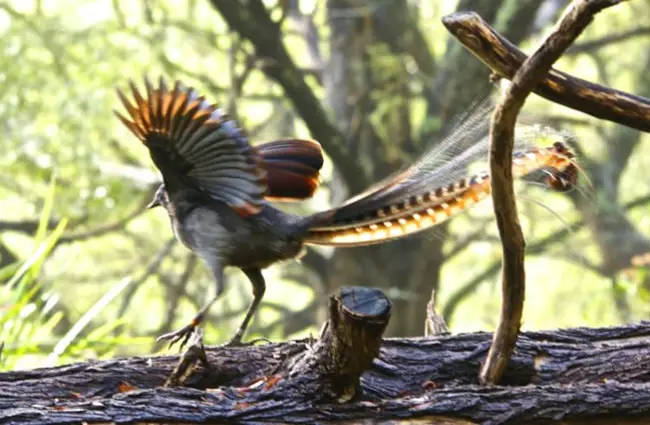
Where to Find These Elusive Singers: Lyrebird Habitat
Lyrebirds are endemic to Australia, primarily inhabiting the temperate and subtropical forests of the eastern seaboard. Their preferred habitat is characterized by dense undergrowth, moist soil, and a rich leaf litter layer, which provides both cover and a bountiful food source.
- Geographical Distribution: Superb Lyrebirds are found from southern Queensland, through New South Wales, Victoria, and into Tasmania (where they were introduced in the 19th century). Albert’s Lyrebirds have a much smaller, fragmented range in the rainforests of the Queensland-New South Wales border region.
- Specific Forest Types: They thrive in wet sclerophyll forests, temperate rainforests, and even some drier eucalypt forests with a dense shrub layer. The presence of tree ferns, mosses, and fallen logs indicates ideal conditions.
- Altitudinal Range: While often associated with mountain ranges and gullies, they can be found from sea level up to elevations of around 1,500 meters, adapting to various forest environments.
For the Aspiring Animal Lover: How to Find a Lyrebird in the Wild
Spotting a Lyrebird requires patience and a keen ear. They are shy and often blend seamlessly into their dense surroundings. The best approach is to:
- Listen First: Their complex calls, often a medley of other bird species and environmental sounds, are the most reliable indicator of their presence. Listen for unusual sequences of calls that seem to shift abruptly.
- Time Your Visit: Lyrebirds are most active in the early morning and late afternoon, when they forage and males perform their courtship displays.
- Choose the Right Location: Focus on areas with dense undergrowth, moist soil, and plenty of leaf litter. National parks and state forests in their known range are excellent starting points.
- Be Still and Observe: Once you hear a call, find a quiet spot and remain still. They are ground-dwelling birds, so scan the forest floor. Movement and noise will quickly send them scurrying into cover.
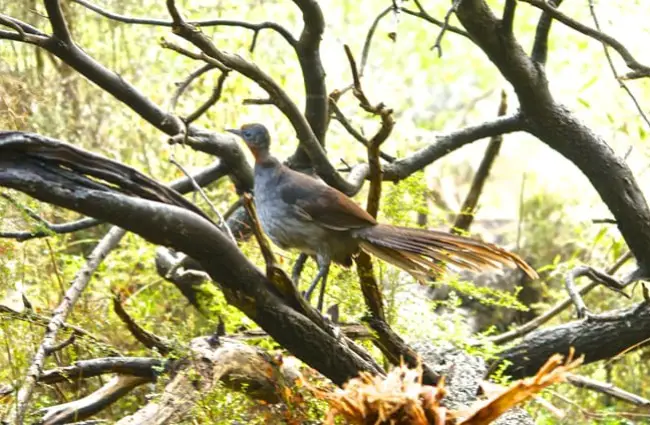
A Feast from the Forest Floor: Lyrebird Diet
Lyrebirds are primarily insectivores, but their diet is quite varied, reflecting the rich biodiversity of their forest homes. They are expert foragers, using their strong legs and feet to scratch and dig through the leaf litter and soft soil.
- Main Staples: Their diet consists largely of invertebrates such as earthworms, insects (beetles, ants, larvae), spiders, centipedes, and snails.
- Supplementary Foods: They also consume fungi, seeds, and occasionally small amphibians or reptiles.
- Foraging Behavior: A Lyrebird’s foraging technique is distinctive. They use their powerful feet to rake aside leaf litter, exposing the hidden creatures beneath. This constant scratching creates small depressions in the forest floor, a tell-tale sign of their presence.
Evolutionary Journey: An Ancient Lineage
The Lyrebird represents an ancient branch of the passerine order, a testament to Australia’s long isolation and unique evolutionary pathways. Their lineage dates back tens of millions of years, placing them among the earliest songbirds to evolve. This deep evolutionary history is reflected in their unique morphology and complex behaviors, which have been refined over eons within their specific ecological niche. Their ancestors likely roamed the supercontinent of Gondwana, with their modern forms evolving as Australia drifted north, shaping the continent’s distinct flora and fauna.
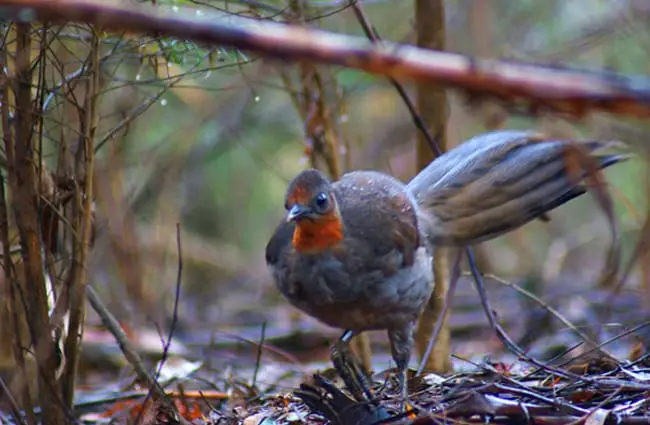
The Lyrebird’s Life Cycle: From Courtship to Chick
The Lyrebird’s reproductive cycle is a fascinating display of natural selection at work, particularly the male’s elaborate efforts to attract a mate.
The Grand Performance: Mating and Reproduction
The breeding season, typically from May to August (winter in Australia), transforms the forest into a stage for the male Lyrebird’s spectacular courtship ritual.
- Male Display:
- The Stage: Males construct small, circular mounds or platforms of earth on the forest floor, which serve as their display arenas.
- The Tail Fan: The male Superb Lyrebird fans his magnificent tail feathers forward over his head, creating a shimmering, silvery canopy.
- The Vocal Symphony: This is where the mimicry truly shines. The male performs an intricate and prolonged song, weaving together a tapestry of imitated calls from dozens of other bird species, animal sounds, and even human-made noises. This complex vocalization is believed to demonstrate his fitness and experience to potential mates.
- The Dance: While singing, the male performs a series of intricate movements, strutting and quivering his tail feathers, all designed to impress a discerning female.
- Female Choice: Females observe multiple male displays before selecting a mate. The quality and complexity of the male’s song and display are crucial factors.
- Nest Building and Egg Laying: After mating, the female takes on all parental responsibilities. She constructs a large, domed nest, often in a sheltered location such as a rock crevice, tree fern, or dense shrub. The nest is made from sticks, moss, and ferns, lined with soft materials like rootlets and feathers. A single egg, typically dark brown with spots, is laid.
- Incubation and Chick Rearing: The female incubates the egg for approximately 50 days, one of the longest incubation periods among passerines. Once hatched, the chick is altricial (helpless) and remains in the nest for about 6-10 weeks, fed and cared for solely by the mother. Even after fledging, the young Lyrebird may stay with its mother for several months, learning essential foraging and survival skills.
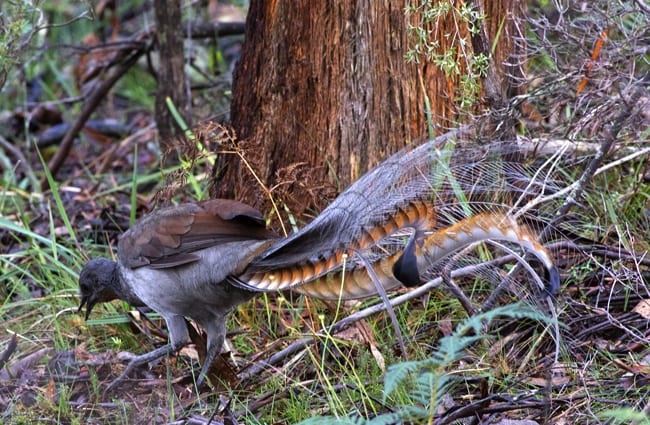
Lyrebirds in Their World: Ecosystem Interactions and Conservation
Lyrebirds are integral components of their forest ecosystems, playing several roles that contribute to the health and vitality of their habitat.
Architects of the Undergrowth: Contribution to the Ecosystem
- Soil Aeration and Nutrient Cycling: Their constant scratching and digging through the leaf litter helps to aerate the soil and mix organic matter, facilitating decomposition and nutrient cycling. This action can be compared to small-scale tilling, which benefits plant growth and soil health.
- Seed Dispersal: While not primary seed dispersers, Lyrebirds may inadvertently spread seeds as they forage, contributing to forest regeneration.
- Prey Species: Lyrebirds, particularly the young, serve as a food source for native predators such as dingoes, goannas, and various birds of prey. However, they are also vulnerable to introduced predators.
Lyrebirds and Humans: A Complex Relationship
Cultural Significance
The Lyrebird holds a special place in Australian culture. Indigenous Australians have long revered the bird, incorporating it into their Dreamtime stories, dances, and art. Its mimicry often features in narratives about the creation of sounds and the wisdom of the natural world. In modern Australia, the Lyrebird is a national icon, symbolizing the unique biodiversity of the continent and inspiring artists, writers, and musicians.
Human Interaction and Conservation Status
While Superb Lyrebirds are currently classified as “Least Concern,” Albert’s Lyrebird is listed as “Near Threatened” due to its restricted range and habitat fragmentation. Both species face threats from human activities:
- Habitat Loss: Logging, urbanization, and agricultural expansion lead to the destruction and fragmentation of their forest homes.
- Introduced Predators: Feral cats and foxes pose a significant threat, particularly to eggs, chicks, and foraging adults.
- Bushfires: Severe bushfires, which are becoming more frequent and intense, can devastate Lyrebird habitats and directly impact populations.
Conservation efforts focus on habitat protection, fire management, and control of introduced predators. Understanding their ecological needs is paramount to ensuring their survival.
For the Hiker: What to Do if You Encounter a Lyrebird
An encounter with a Lyrebird in the wild is a truly special experience. To ensure both your safety and the bird’s well-being:
- Observe from a Distance: Maintain a respectful distance. Lyrebirds are shy, and approaching too closely can cause them stress and disrupt their natural behavior.
- Be Quiet and Still: Avoid sudden movements or loud noises. Allow the bird to continue its activities undisturbed.
- Do Not Feed: Never offer food to wild animals. This can lead to dependency, nutritional deficiencies, and habituation to humans, which can be dangerous for them.
- Appreciate the Moment: Simply enjoy the privilege of witnessing one of nature’s most extraordinary performers in its natural habitat.
Fascinating Facts and Expert Insights
Beyond their basic biology, Lyrebirds possess a wealth of intriguing characteristics that continue to captivate researchers and enthusiasts alike.
The Art of Mimicry: Beyond Birdsong
The Lyrebird’s vocal mimicry is legendary, extending far beyond the calls of other birds. They can accurately reproduce a startling array of sounds, including:
- Other Bird Species: Calls of kookaburras, whipbirds, parrots, and many more.
- Animal Sounds: Dingo howls, dog barks, koala calls.
- Human-Made Noises: Chainsaws, camera shutters, car alarms, car engines, axe blows, even human speech in some rare instances.
Purpose of Mimicry: While the exact reasons are still debated, mimicry is believed to serve several functions:
- Mate Attraction: A male’s extensive repertoire demonstrates his age, experience, and intelligence, making him a more attractive mate.
- Territorial Defense: Mimicking the calls of predators or other dominant birds might deter rivals or warn off threats.
- Communication: It could also play a role in general communication within their species or with other forest inhabitants.
Lyrebirds are not simply recording devices; they learn, retain, and creatively weave these sounds into complex sequences, often performing them with remarkable accuracy and context.
Physical Attributes and Adaptations
- Size and Weight: Superb Lyrebirds are relatively large passerines, measuring up to 90 cm (35 inches) in length, with males weighing around 1 kg (2.2 lbs). Albert’s Lyrebirds are slightly smaller.
- Distinctive Tail: The male Superb Lyrebird’s tail, which can reach up to 70 cm (28 inches) in length, consists of 16 feathers: two long, slender outer “lyre” feathers, two wire-like median feathers, and twelve broad, lace-like filamentary feathers. This elaborate tail is shed and regrown annually.
- Strong Legs and Feet: Their powerful legs and large, clawed feet are perfectly adapted for their ground-dwelling, scratching lifestyle.
- Flight Capabilities: While capable of short, powerful flights, Lyrebirds prefer to run and leap through the undergrowth. They are not strong fliers and typically only fly short distances, often downhill or to a low branch for roosting.
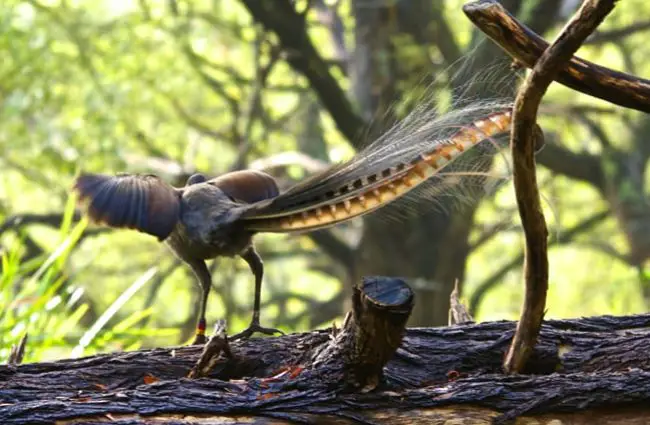
Lyrebirds in Captivity: A Zookeeper’s Guide
Caring for Lyrebirds in a zoological setting presents unique challenges and rewards, requiring specialized knowledge and dedication to replicate their natural environment and behaviors.
Essential Tasks for Zookeepers:
- Enclosure Design:
- Spaciousness: Lyrebirds require very large, naturalistic aviaries with ample ground space for foraging and display.
- Vegetation: Dense native undergrowth, tree ferns, and fallen logs are crucial for cover, enrichment, and a sense of security.
- Substrate: A deep layer of leaf litter and soft soil is essential to allow for natural scratching and digging behaviors.
- Shelter: Provide sheltered areas for nesting and roosting, mimicking rock crevices or dense shrubbery.
- Dietary Management:
- Live Invertebrates: A primary component of their diet must be live insects (crickets, mealworms, earthworms) to stimulate natural foraging and provide essential nutrients.
- Specialized Pellets: Supplement with high-quality insectivore pellets formulated for ground-dwelling birds.
- Fruits and Vegetables: Offer a small variety of finely chopped fruits and vegetables as enrichment, though these are not primary dietary components.
- Fungi: Occasionally provide edible fungi found in their native habitat, if safely sourced.
- Environmental Enrichment:
- Foraging Opportunities: Regularly scatter food items within the leaf litter to encourage natural digging.
- Vocal Stimulation: Provide opportunities for mimicry by playing recordings of other bird calls or environmental sounds, or by allowing exposure to varied ambient noises.
- Substrate Variation: Introduce new logs, branches, or leaf litter to keep the environment stimulating.
- Health Monitoring: Regular veterinary checks, observation of foraging activity, vocalizations, and physical condition are vital.
- Social Considerations: Lyrebirds are generally solitary outside of breeding, so housing arrangements should reflect this to minimize stress.
What to Avoid:
- Loud or Sudden Noises: Lyrebirds are sensitive to disturbance, especially during breeding or display.
- Inappropriate Diet: A diet lacking in live invertebrates or too high in processed foods can lead to health issues.
- Lack of Enrichment: Without opportunities to forage and mimic, Lyrebirds can become stressed or exhibit stereotypic behaviors.
- Overcrowding: Housing too many individuals in an inadequate space can lead to aggression and stress.
- Direct Human Interference: While zookeepers must provide care, minimizing direct handling and allowing the birds to exhibit natural behaviors is crucial.
Conclusion: A Voice Worth Protecting
The Lyrebird, with its ancient lineage, unparalleled vocal artistry, and intricate life cycle, stands as a magnificent emblem of Australia’s unique natural heritage. From its role in aerating the forest floor to its profound cultural significance, this remarkable bird enriches both its ecosystem and the human imagination. As we continue to marvel at its mimicry and observe its complex behaviors, the call to protect its precious forest homes grows ever louder. Ensuring the survival of the Lyrebird means safeguarding a voice that echoes the very essence of the wild, a voice that deserves to be heard for generations to come.

![Red Angus Closeup of a beautiful Red Angus cowPhoto by: U.S. Department of Agriculture [pubic domain]https://creativecommons.org/licenses/by/2.0/](https://animals.net/wp-content/uploads/2020/03/Red-Angus-4-238x178.jpg)




![Red Angus Closeup of a beautiful Red Angus cowPhoto by: U.S. Department of Agriculture [pubic domain]https://creativecommons.org/licenses/by/2.0/](https://animals.net/wp-content/uploads/2020/03/Red-Angus-4-100x75.jpg)

